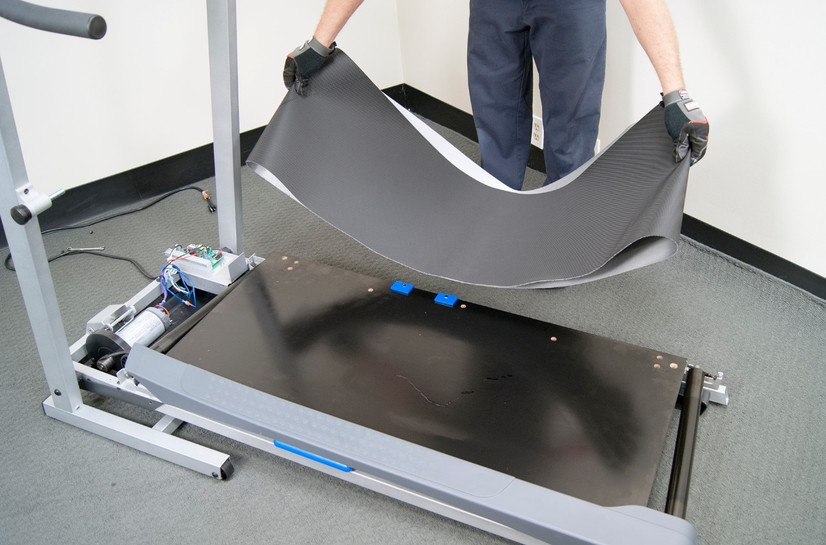Are All Treadmills Made For Running?
Treadmills have become a staple in many home gyms and fitness centers around the world. These versatile machines offer a convenient way to get your daily dose of cardio without the need to step outside. But are all treadmills made for running? In this article, we will uncover the truth behind this common misconception and explore the different types of treadmills available in the market.
Different types of treadmills
When it comes to treadmills, there are various options to choose from. The most common types include manual treadmills, motorized treadmills, and commercial-grade treadmills.
Manual treadmills are powered by the user's movement. They have a belt that moves when you start walking or running on it. While these treadmills may be budget-friendly, they require more effort to use and are not suitable for high-intensity running.
Motorized treadmills, on the other hand, are powered by an electric motor. These treadmills offer a smoother and more controlled running experience. They usually come with adjustable speeds, incline settings, and various workout programs.
Commercial-grade treadmills are designed for heavy use in fitness centers and are built to withstand continuous running. These treadmills are often equipped with advanced features such as shock absorption systems and interactive displays.
Understanding the purpose of treadmills
Treadmills are primarily designed for running, but they can also be used for walking and jogging. Running on a treadmill provides a controlled environment where you can set your desired pace, incline, and distance. It allows you to track your progress and challenge yourself by increasing the intensity of your workouts.
While treadmills are commonly associated with running, they can also be used for other forms of exercise. Many models offer pre-programmed workouts that target specific muscle groups or focus on interval training. Some treadmills even have built-in features like virtual reality simulations or interactive coaching programs to make your workouts more engaging.
Key features to look for in a running treadmill
If you are specifically looking for a treadmill for running, there are some key features you should consider.
Motor power: Look for a treadmill with a powerful motor that can handle your desired speed and intensity. A motor with at least 2.5 horsepower is recommended for running purposes.
Running surface: The size and cushioning of the running surface are important factors to consider. A wider and longer surface provides more room for comfortable running. Look for treadmills with shock absorption systems to reduce the impact on your joints.
Incline options: Running on an incline can help simulate outdoor terrain and increase the intensity of your workout. Look for a treadmill that offers adjustable incline settings to add variety to your runs.
Programs and tracking features: Many treadmills come with pre-set workout programs that can help you achieve your fitness goals. Look for features like heart rate monitoring, calorie tracking, and compatibility with fitness apps to enhance your running experience.
Benefits of using a running-specific treadmill
Using a running-specific treadmill offers several benefits compared to running outdoors or using a general-purpose treadmill.
Controlled environment: Running on a treadmill allows you to control various factors like speed, incline, and weather conditions. This can be particularly beneficial if you live in an area with extreme weather or unsafe running conditions.
Reduced impact: Running on a treadmill with proper cushioning can reduce the impact on your joints compared to running on hard surfaces like concrete or asphalt. This can help prevent injuries and make your workouts more comfortable.
Consistency and convenience: With a treadmill at home, you have the convenience of running whenever you want, regardless of the time or weather. You don't have to worry about finding a safe running route or dealing with traffic.
Training customization: Many running-specific treadmills offer customizable workout programs and tracking features. This allows you to tailor your training to your specific goals, whether it's improving speed, endurance, or weight loss.
Common misconceptions about treadmills
There are several misconceptions surrounding treadmills, especially when it comes to their suitability for running. Let's debunk some of these myths:
Myth 1: Treadmills are only for beginners or people with joint problems. While treadmills are suitable for beginners and those with joint issues, they are also widely used by experienced runners and athletes for their training needs.
Myth 2: Running on a treadmill is not as effective as running outdoors. Running on a treadmill can be just as effective as running outdoors if you set the right speed and incline. It offers a controlled environment that allows you to focus on your technique and track your progress more accurately.
Myth 3: Treadmills are boring and monotonous. Many modern treadmills come with interactive features like virtual reality simulations, built-in speakers, and compatibility with fitness apps. These features can make your workouts more engaging and enjoyable.
Non-running uses for treadmills
While treadmills are primarily designed for running, they can also be used for various non-running exercises. Here are some alternative uses for treadmills:
Walking: Treadmills are perfect for brisk walking workouts. Walking on a treadmill can help improve cardiovascular health, burn calories, and strengthen leg muscles.
Hiking simulation: Some treadmills offer incline settings that can simulate uphill hiking. This is a great way to challenge your leg muscles and improve your endurance.
Interval training: Treadmills are ideal for interval training, where you alternate between intense bursts of running or walking and periods of active recovery. This type of workout can help improve cardiovascular fitness and burn more calories.
Cross-training: Treadmills can be used as part of a cross-training routine. You can incorporate strength training exercises like lunges, squats, or side shuffles while holding onto the treadmill's handrails for support.
Alternative exercise equipment for non-runners
If running is not your preferred form of exercise, there are plenty of alternative equipment options to choose from. Here are some popular alternatives to treadmills:
Elliptical trainers: Elliptical trainers provide a low-impact cardio workout that mimics the motion of running without the impact on your joints. They are suitable for people of all fitness levels and offer a full-body workout.
Stationary bikes: Stationary bikes are another great option for low-impact cardio. They provide a challenging leg workout and can help improve cardiovascular fitness.
Rowing machines: Rowing machines offer a full-body workout that targets multiple muscle groups. They are great for improving strength, endurance, and cardiovascular fitness.
Stair climbers: Stair climbers simulate climbing stairs and provide an intense lower-body workout. They are particularly effective for toning the glutes, thighs, and calves.
How to choose the right treadmill for your fitness goals
When selecting a treadmill, it's important to consider your fitness goals and individual needs. Here are some factors to keep in mind:
Budget: Determine your budget and look for treadmills that offer the features you need within your price range. Remember to prioritize quality and durability over flashy features.
Space availability: Consider the available space in your home or gym. Measure the area where you plan to place the treadmill to ensure it fits comfortably.
User weight and height: Check the weight capacity and the dimensions of the treadmill to ensure it can accommodate your body size and weight.
Warranty and customer support: Look for treadmills that come with a warranty and reliable customer support. This can give you peace of mind and protect your investment.
Reviews and recommendations: Read customer reviews and seek recommendations from fitness professionals or friends who have experience with treadmills. Their insights can help you make an informed decision.
Conclusion: Are all treadmills made for running?
In conclusion, not all treadmills are made for running, but there are specific treadmills designed for running enthusiasts. When choosing a treadmill, it's essential to consider your fitness goals, budget, and individual needs. Whether you are a seasoned runner or a beginner looking to improve your fitness, a running-specific treadmill can offer numerous benefits. However, treadmills can also be used for various non-running exercises, making them a versatile piece of equipment for any fitness enthusiast. So, if you're ready to take your running or walking workouts to the next level, investing in a quality treadmill can be a game-changer for your fitness journey.
Start your running journey today, and experience the convenience and benefits of a running-specific treadmill!


